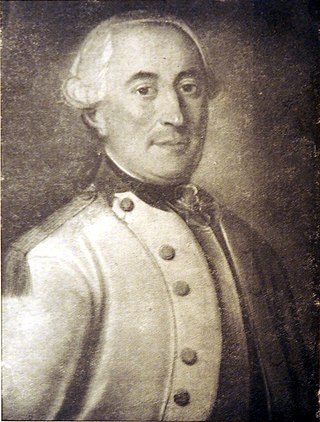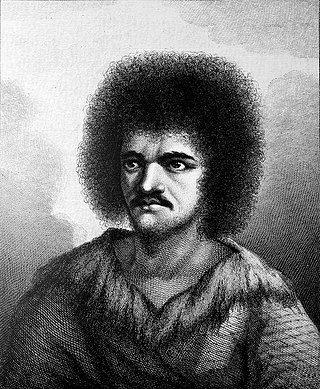
Yves-Joseph de Kerguelen-Trémarec was a French Navy officer. He discovered the Kerguelen Islands during his first expedition to the southern Indian Ocean. Welcomed as a hero after his voyage and first discovery, Kerguelen fell out of favour after his second voyage and was cashiered for violating Navy regulations. He was rehabilitated during the French Revolution.

Ferdinand Berthoud, was a scientist and watchmaker. He became master watchmaker in Paris in 1753. Berthoud, who held the position of Horologist-Mechanic by appointment to the King and the Navy, left behind him an exceptionally broad body of work, in particular in the field of marine chronometers.

The French submarine Dupuy de Lôme was the lead boat of the class of submarines built for the French Navy.
The Baudin expedition of 1800 to 1803 was a French expedition to map the coast of New Holland. Nicolas Baudin was selected as leader in October 1800. The expedition started with two ships, Géographe, captained by Baudin, and Naturaliste captained by Jacques Hamelin, and was accompanied by nine zoologists and botanists, including Jean-Baptiste Leschenault de la Tour, François Péron and Charles-Alexandre Lesueur as well as the geographer Pierre Faure.
Étoile ("Star") was a fluyt of the French Navy. She was originally a merchantman named Placelière and was purchased by the Navy while still on the stocks. She was renamed Étoile in April 1763 and re-classed as a corvette. She is famous for being one of Louis Antoine de Bougainville's ships in his circumnavigation between 1766 and 1769, along with Boudeuse.

Alexis-Marie de Rochon, known as Abbé Rochon, was born in Brest, France on 21 February 1741, and died in Paris on 5 April 1817. He was a French astronomer, physicist and traveller. He worked on lens design and crystal optics, inventing the Rochon prism polariser.

Charles Pierre Claret, comte de Fleurieu was a French Navy officer, explorer, hydrographer and politician. He served as Minister of the Navy under Louis XVI, and was a member of the Institut de France. He was brother to botanist Marc Antoine Louis Claret de La Tourrette.

The Duc de Bourgogne was an 80-gun ship of the line of the French Navy.

Hector was a 74-gun ship of the line of the French Navy, lead ship of her class. Hector was launched in 1755 and fought in the American Revolutionary War during which she captured two ships of the British Royal Navy on 14 August 1778. In 1782, the ship was captured by the Royal Navy at the Battle of the Saintes in 1782. Taken into service by the Royal Navy, the vessel was renamed HMS Hector. On 5 September 1782. HMS Hector fought two French frigates. Severely damaged during the battle, and by a hurricane that followed later in September, Hector sank on 4 October 1782.
The Provence was a 64-gun ship of the line of the French Navy. She was funded by a don des vaisseaux donation from the Estates of Provence.

Aurore was a corvette or snow, designed by Nicolas Ozanne. Built privately on the personal funds of François-César Le Tellier de Courtanvaux, she was commissioned by the French Navy and used for scientific purposes. She performed the first measurement of longitude using Marine chronometer.
Enjouée was an Infidèle-class 32-gun frigate of the French Navy, built on a design by Jean-Joseph Ginoux.

Joseph-Bernard de Chabert-Cogolin was a French Navy officer. He served in the War of American Independence.

Antoine Hilarion de Beausset was a French Navy officer. He notably served during the War of American Independence.
Aurore was a frigate of the French Navy

Joseph de Flotte d'Argenson was a French Navy officer. He served in the War of American Independence, earning a membership in the Society of Cincinnati and the Order of Saint Louis.
Gros Ventre was an armed storeship of the French Navy. She is notable for taking part in the First voyage of Kerguelen and for her subsequent solo mission of discovery to Australia. Anse du Gros Ventre was named in her honour.

The first voyage of Kerguelen was an expedition of the French Navy to the southern Indian Ocean conducted by the fluyts Fortune and Gros Ventre, under Lieutenant Yves-Joseph de Kerguelen-Trémarec. The aims of the expedition were to survey recently discovered sea routes between Isle de France and India, to seek the postulated Terra Australis Incognita, and to explore Australia.

Ahutoru was a Tahitian man, brother and adopted son of Ereti, the chief of the village where Louis Antoine de Bougainville anchored. He became the foremost intermediary between the Tahitians and the French during the visit, and volunteered to accompany Bougainville on his journey back to France. After one year in Paris, Ahutoru undertook the journey back to Tahiti, but he died of smallpox on the way.
The Second voyage of Kerguelen was an expedition of the French Navy to the southern Indian Ocean conducted by the 64-gun ship of the line Roland, the 32-gun frigate Oiseau, and the corvette Dauphine, under Captain Kerguelen. The aims of the expedition were to confirm the findings of the First voyage of Kerguelen, returning the Kerguelen Islands and exploring what was thought to be a peninsula of a southern continent.












